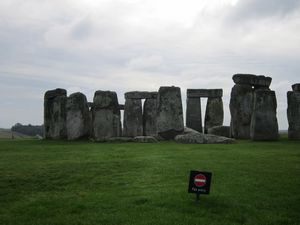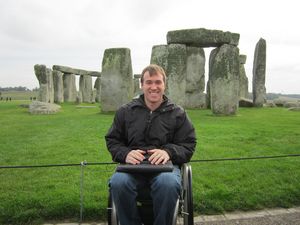Disabled Access At The Stonehenge Ruins
By John Sage
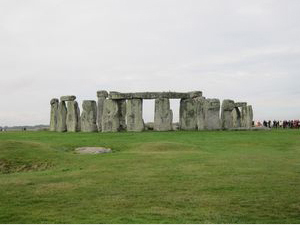 Stonehenge disabled access greets wheelchair users with ramped access at the entrance, a paved path on one side of the ruins, and a grass path on the other side of the ruins.
Stonehenge disabled access greets wheelchair users with ramped access at the entrance, a paved path on one side of the ruins, and a grass path on the other side of the ruins.
Listed as a UNESCO World Heritage site, Stonehenge contains a perimeter ditch that was first constructed 5000 years ago and the enormous stones that were erected over the next 500 years. Stonehenge is an amazing sight that every European disabled tourist should make it a point to see!
View accessible tours of Stonehenge
The biggest challenge that Stonehenge disabled access presents are the two ramps at the entrance (described below). The optional grass path (shown in the photos below) could also be challenging, especially if the ground is wet. Overall, manual wheelchair users, power wheelchair users, and mobility scooter users will have minimal difficulty visiting Stonehenge.
Am emailing to inform you that the information you provide for disabled access to Stonehenge, Wiltshire, UK is now unfortunately obsolete, as English Heritage have relocated the visitor centre, which is now about one and a half miles from the stones, and the section of the A344 which passed Stonehenge has been grassed over.From the English heritage website:“The main areas in and around car/coach parks, the visitor centre and the Stone Circle are accessible by wheelchair via tarmac and grass paths (subject to weather). The visitor shuttle carriages are also accessible. The wider landscape is not accessible to standard wheelchairs. Two wheelchairs are available to visitors on request at the admissions tills on a first come, first served basis.Visitor Shuttle service operates frequently from outside the shop. No need to pre-book. Takes 10 minutes to reach the Stones. Shuttles stop at Fargo Plantation (about halfway to the Stones) so that visitors can walk part of the way if they wish.”
I gave Stonehenge a 4 Star Sage Accessibility Rating because it has short distances, smooth pavement, only a couple of ramps, and an accessible toilet. It did not receive a 5 star rating because it is not completely flat.
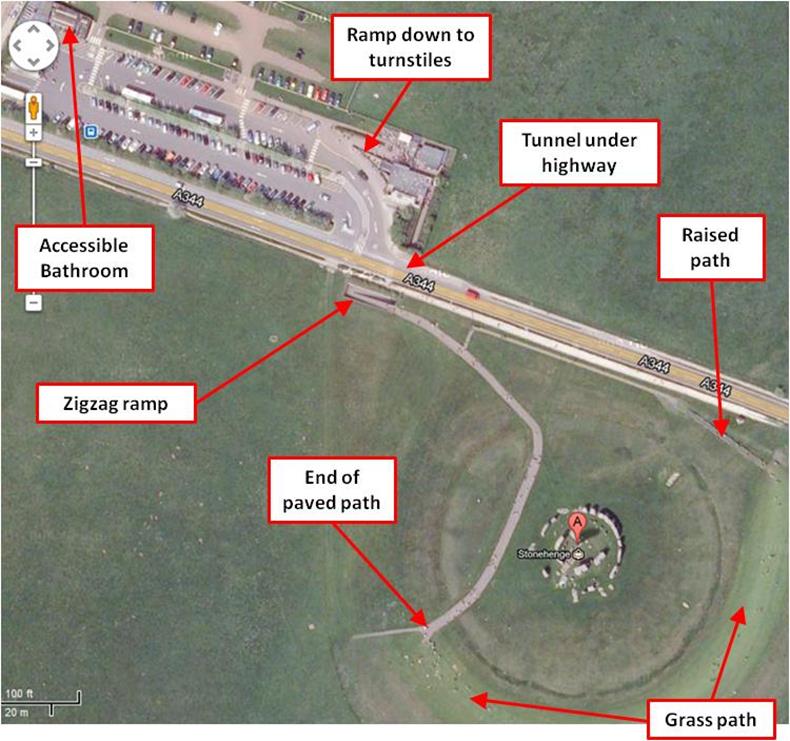
Stonehenge can only be reached by car or bus. There are no other public transportation options available. Stonehenge visitors from London will approach using the A344 highway shown below.
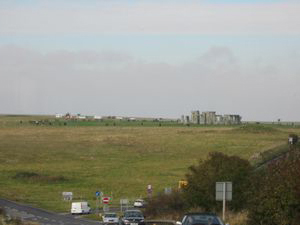
Stonehenge disabled visitors are likely to find large crowds….especially if the weather is decent. Wheelchair users will need to roll down a 15 meter long ramp (3 Star Sage Flatness Rating) to reach the ticket window. There may be a long line of people standing on the ramp.
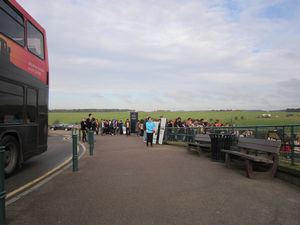
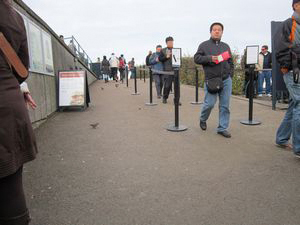
At the ticket window, you will find turnstiles and a gate that can be opened for wheelchair users and strollers/buggies. You will also pick up your audioguide here.
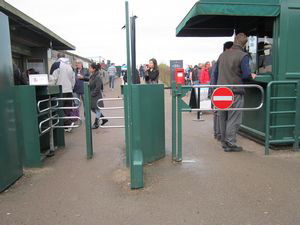
A pedestrian tunnel leads underneath the A344 highway. On the other side of the highway is a zigzag ramp (shown in the photo on the right)that leads to the field surrounding the Stonehenge ruins. It has a similar steepness to the ramp at the entrance.
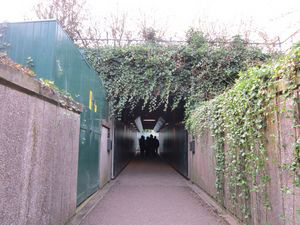
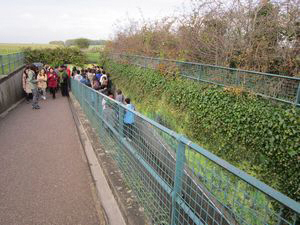
After you get to the top of the ramp, there will be a single paved path leading near the ruins. Everyone must take this path, so just follow the crowds.
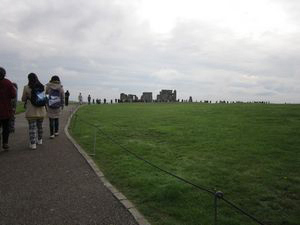
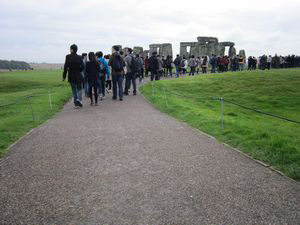
An aerial photo below shows the direction you will be facing as you approach the ruins on the paved path. The grass path is at the top of the picture.
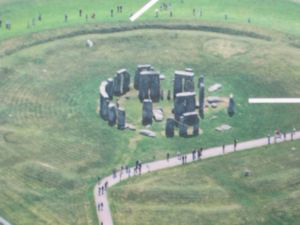
Crowds must stay behind the rope and away from the ruins. The picture of me (John Sage) on the right shows how close you can get. I snapped this pic quickly while no other visitors were next to me….it can get quite crowded! By the way, that’s me in my typical England travel gear:waterproof jacket, folder with directions and maps on my lap, and backpack on the back of my wheelchair…it works great!
The paved path is flat except for a small elevation change due to the 5000 year old circular ditch (shown in the photo on the left). Apparently, the builders weren’t thinking about wheelchair accessibility at the time 😉 Don’t worry though….going over the ditch is easy in a wheelchair. Signs such as the one shown on the right indicate where to go to next track on audioguide.
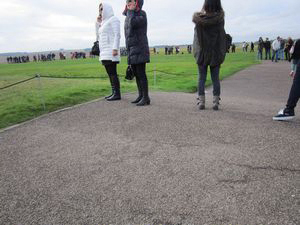
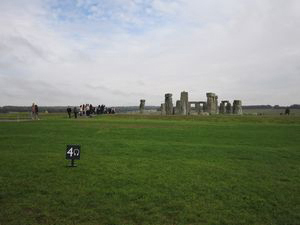
The Stonehenge wheelchair accessible paved path ends on the southwest side of the stone circle (the end of the path is shown on the left & a photo looking back towards Stonehenge is shown on the right). Visitors can either continue on the grass around the ruins (an additional 200 meters) or turn around and head back to the entrance. On the day I visited, the grass was dry and it was easy for me to push my wheelchair around the entire ruins.
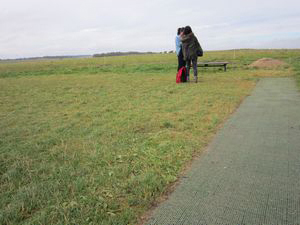
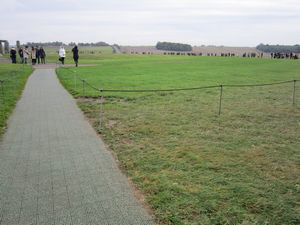
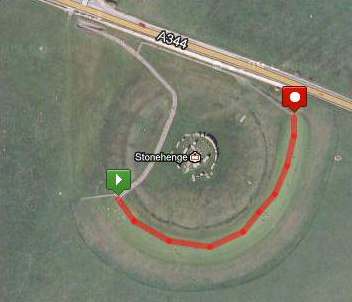
Towards the end of the loop around the stone circle is a raised path to go over ancient “Avenue” ditch (the audioguide will tell you all about the Avenue). The path is ramped at both ends.
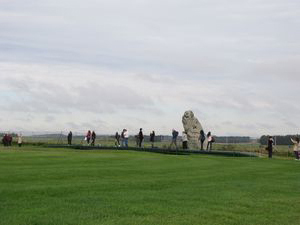
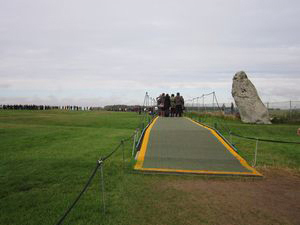
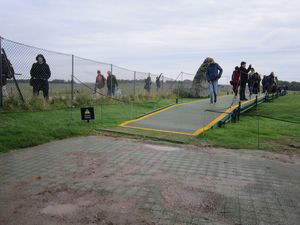
After you reach the paved path again, you’ll go back out through the same entrance you arrived. You’ll go down the zigzag ramp and through the pedestrian tunnel.
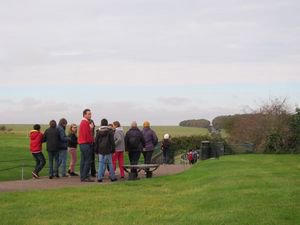
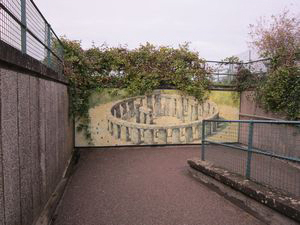
Return your audio guide on the way out and proceed through the gate and up the ramp to the parking lot.
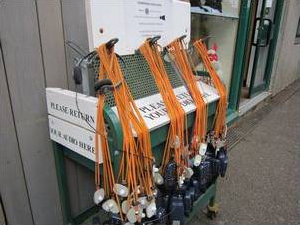

Stonehenge has wheelchair accessible toilets at the far end of car park. There is ramped access, plenty of space, and the grab bars required by UK law.
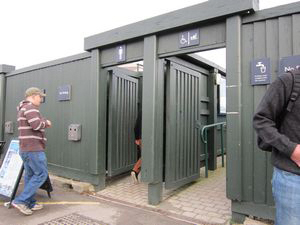
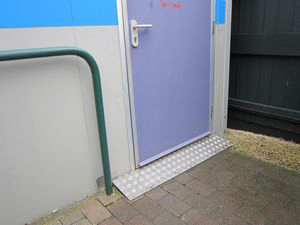
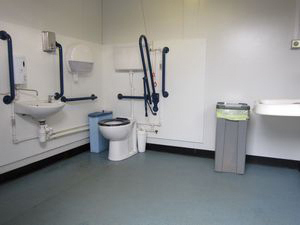
Significant changes to the Stonehenge area are scheduled for 2013-14. The visitor center will be moved further away, and visitors will need to take a short train ride to the ruins. The transit system could result in long lines. Hopefully Stonehenge disabled access will stay as good or better than it currently is.
View accessible tours of Stonehenge


